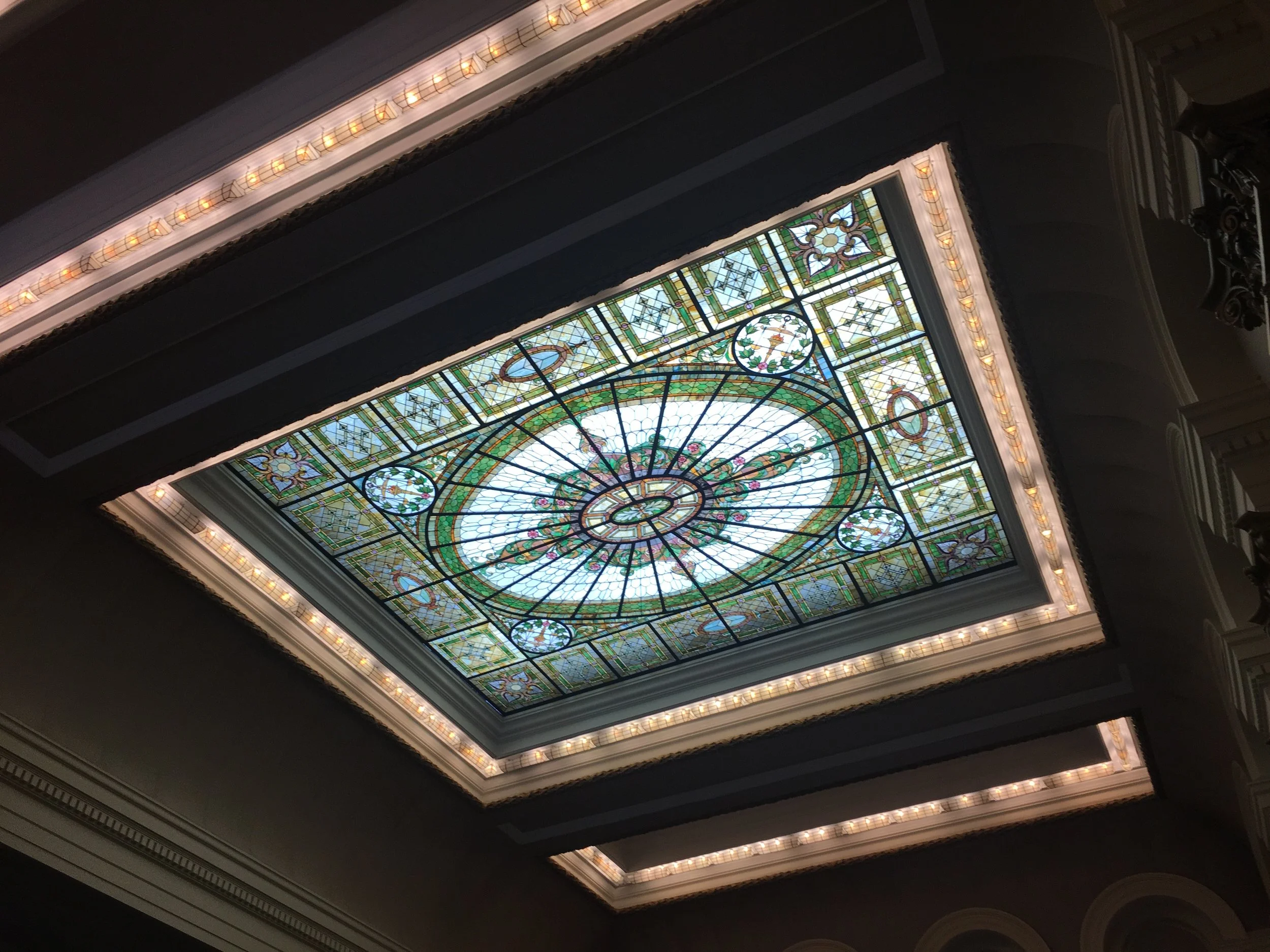Empty LIC Courthouse Full of History
/Inside the Queens County Courthouse in Long Island City a janitor cleaned the second floor bathroom, a lone security guard watched the front door while his colleagues took their lunch breaks and a judge sat chatting with visitors on the empty benches of his courtroom.
The dark hallways, normally bustling with people, sat mostly empty during a lull Wednesday, leaving signs of the building’s rich history out in the open for visitors to admire.
The pillared façade of the English Renaissance-style building sits overlooking Court Square Park in Long Island City near the intersection of Jackson and Thomson Avenues. According to a plaque outside the front door, the construction finished in 1876 but resumed again in the early 1900s after a fire destroyed much of the structure.
Just past security at the entrance of the building is a large multi-story square shaped stairwell with tiled floors and dark colored wood and metal banisters that funnel visitors up to the courtrooms and the clerk’s office.
Without the staircase the building might no longer be standing, a history buff who works in the court said.
In October 1970, someone planted a bomb on the third floor outside of the main courtroom. The phone booth that the bomb exploded in was destroyed but the building maintained its structural integrity because the large staircase absorbed a significant part of the blast, helping to diffuse the power of the bomb.
To this day, there are cracks in the tile floor and chunks missing from the bannister.
The multicolored stained glass skylight in the main courtroom on the third floor of the Queens County Courthouse in Long Island City. // Eagle photo by Clarissa Sosin
Right next to the blast site is the main courtroom — the highlight of the building. Once the third floor courtroom was in such a state of disrepair that rain used to leak through the ceiling. Now, after being renovated in the early 2000’s, the room features cream colored walls with bronze moldings, dark wooden furniture and a large multicolored stained glass skylight.
One of the more notorious defendants tried inside the massive chamber was Ruth Snyder. She was the first woman to be executed in Sing Sing in the 1900’s and whose death by electric chair was caught on camera mid-current. Her original appeal papers from the 1920’s are preserved in a glass container in the back left corner of the chamber. They sit there next to other artifacts from the buildings history gathered by members of the staff over the years, whose sense of pride in the building and the role it’s played in the city’s justice system is palpable.
Even the smaller courtrooms on the second floor have idiosyncratic touches. The crisp white walls of the courtroom that Justice Frederick D. R. Sampson presides in are covered in portraits of important black musicians and Civil Rights leaders. The civil cases in his courtroom are conducted under the watchful eyes of Nelson Mandela, Barack Obama, Martin Luther King and Abraham Lincoln.
Business will be back to normal soon in the courthouse with the usual hundreds of New Yorkers — lawyers, judges, clerks, janitors and Queens residents — filing through the halls, conducting the court’s business, hurrying past the past, too preoccupied to notice. But, for now, in the quiet of a slow day, history takes center stage.




